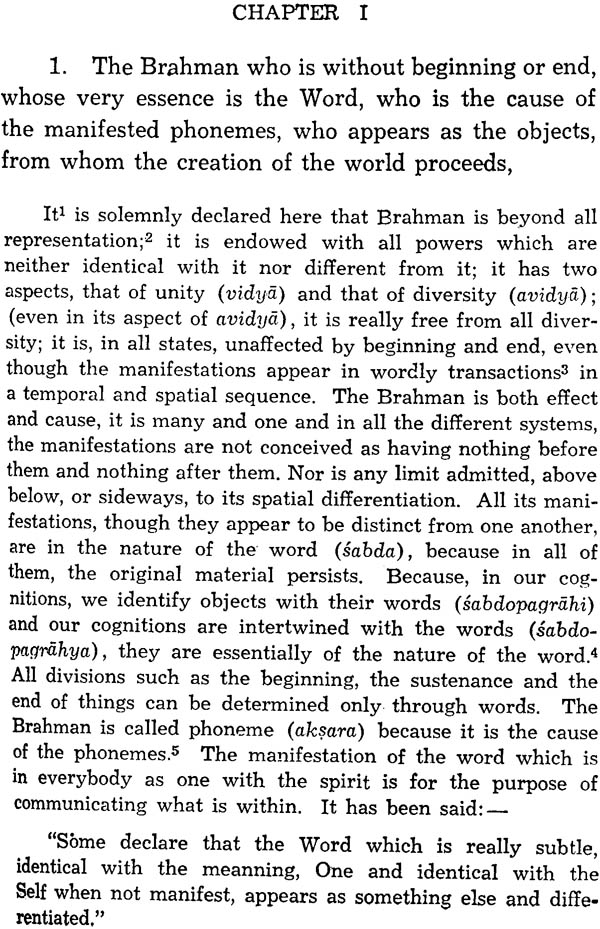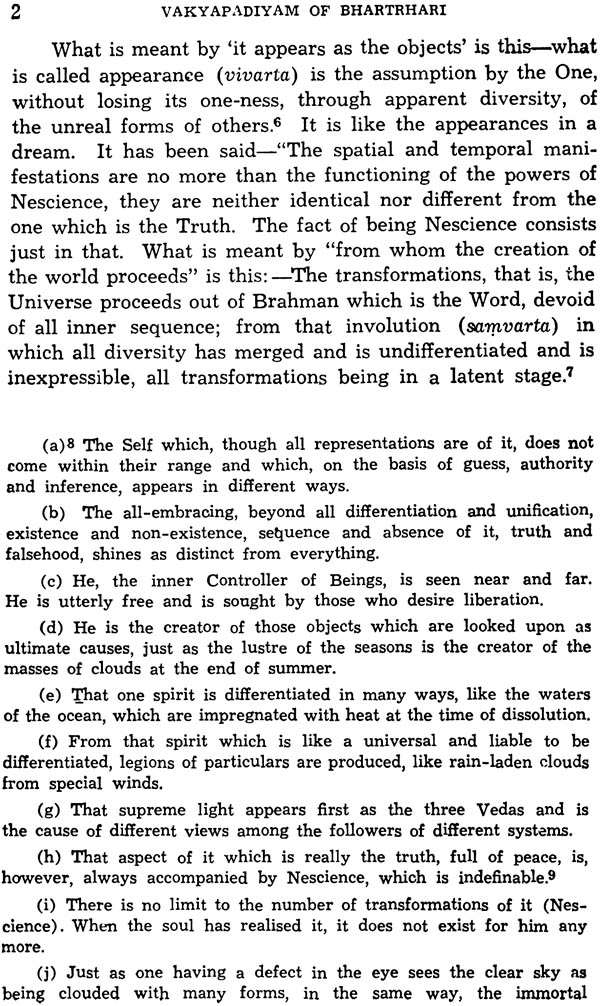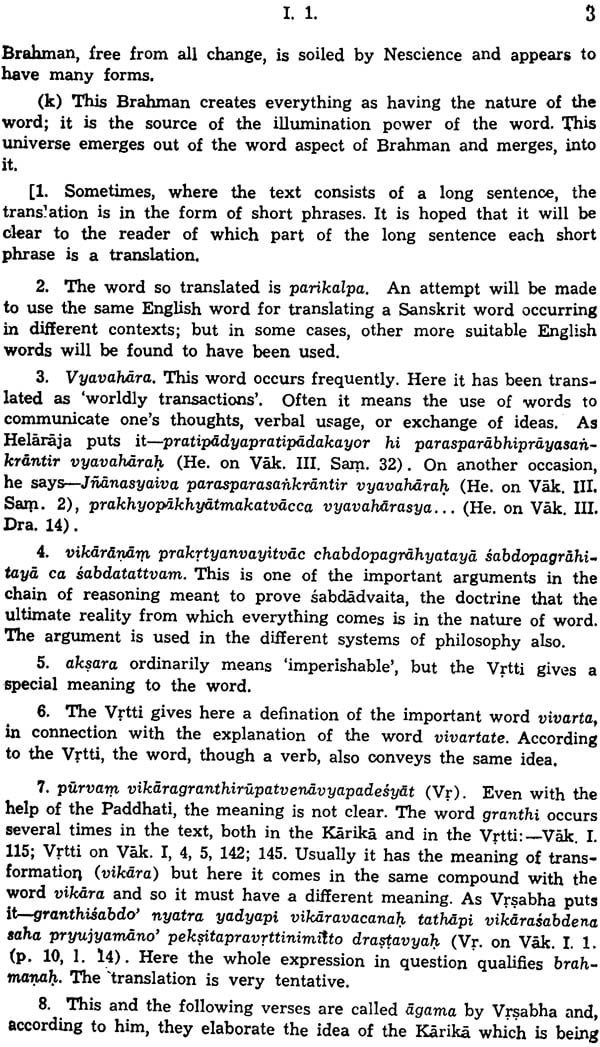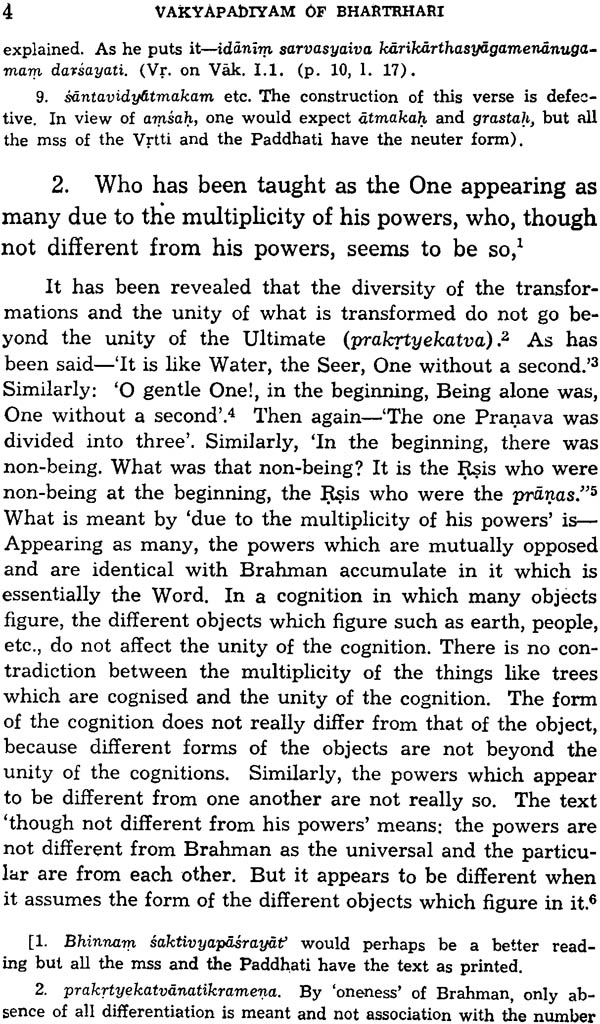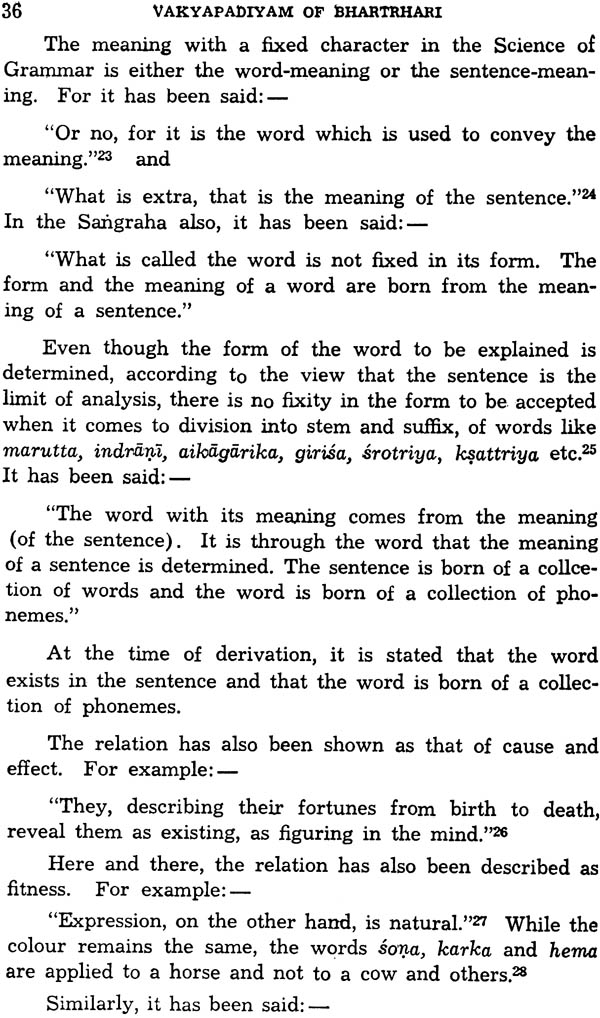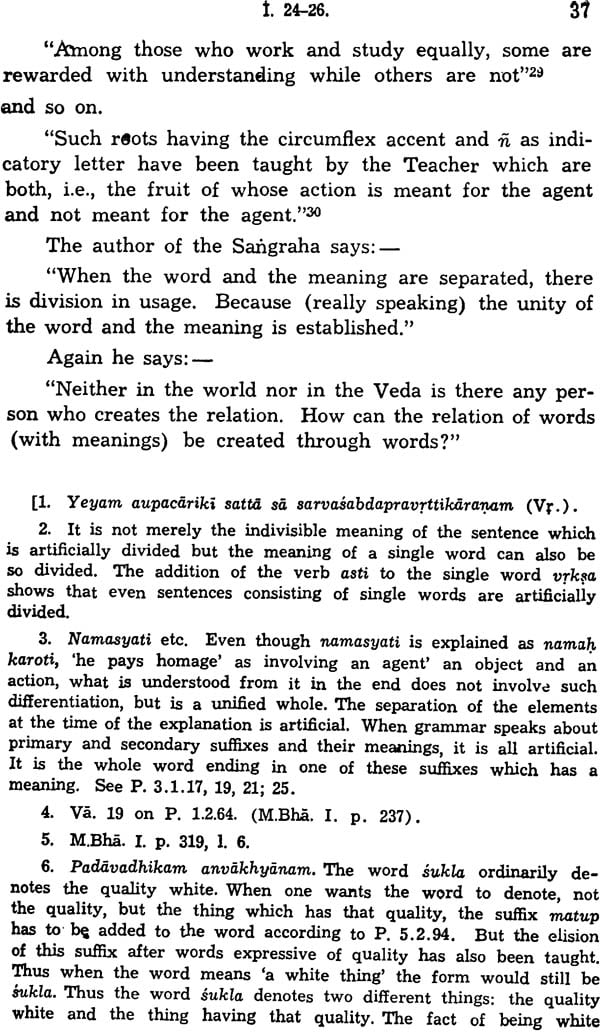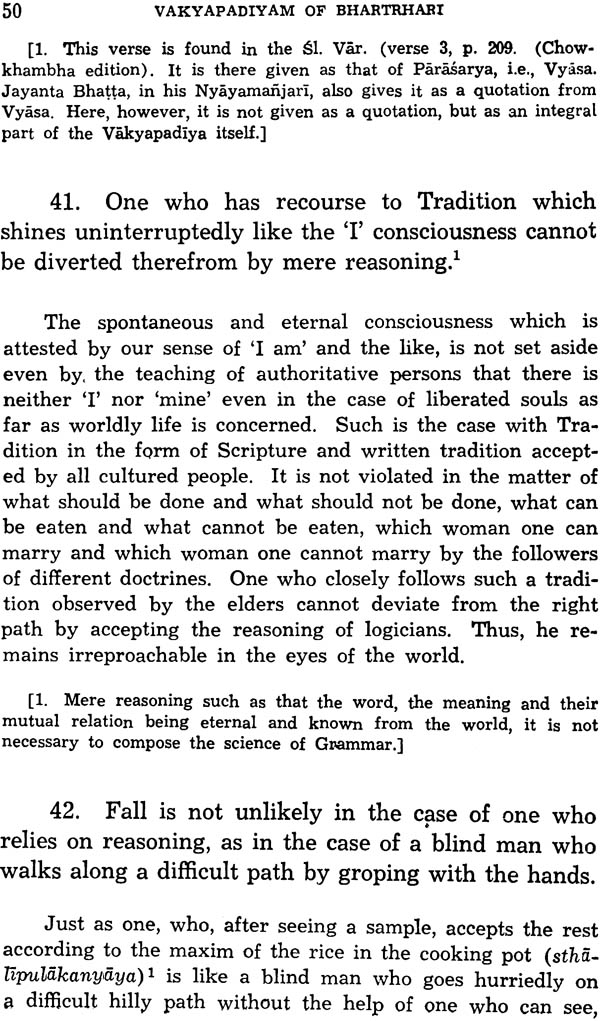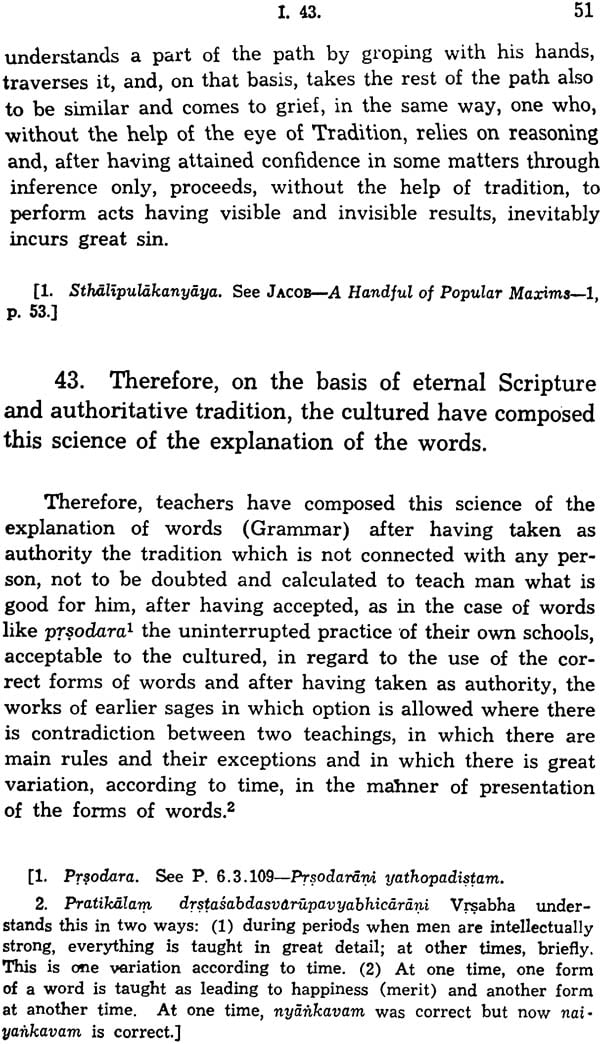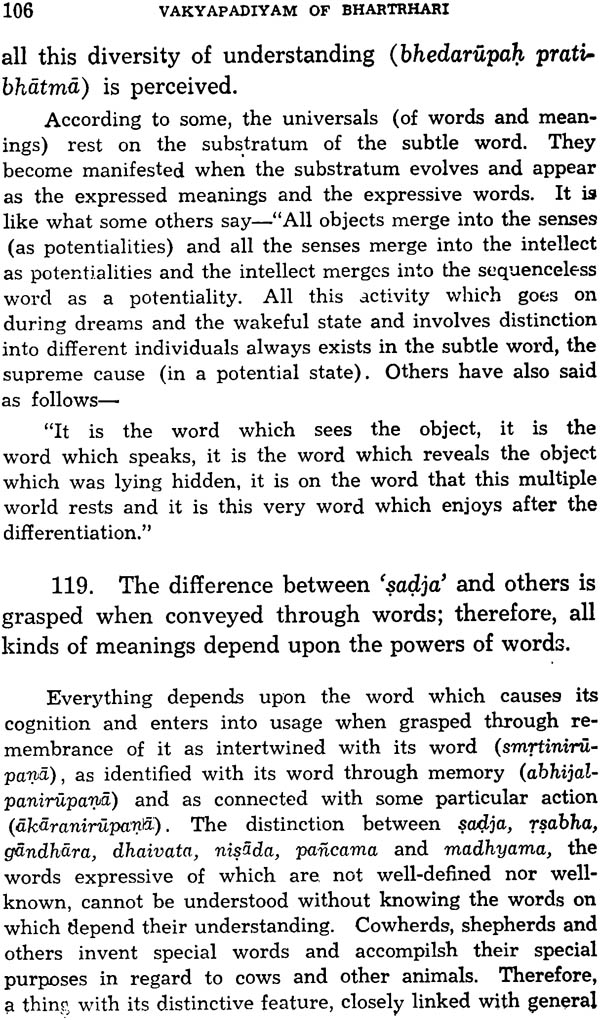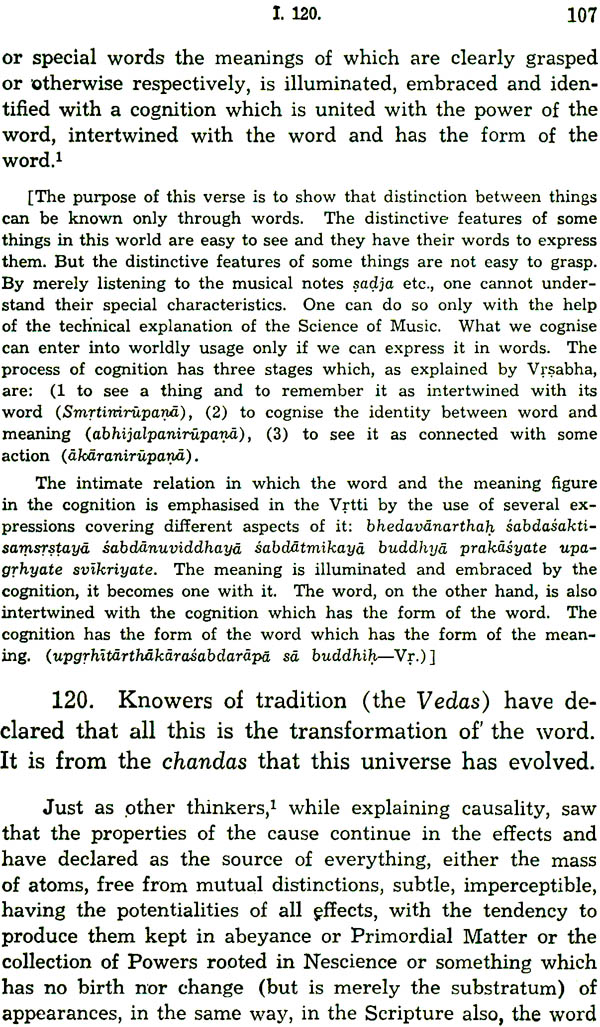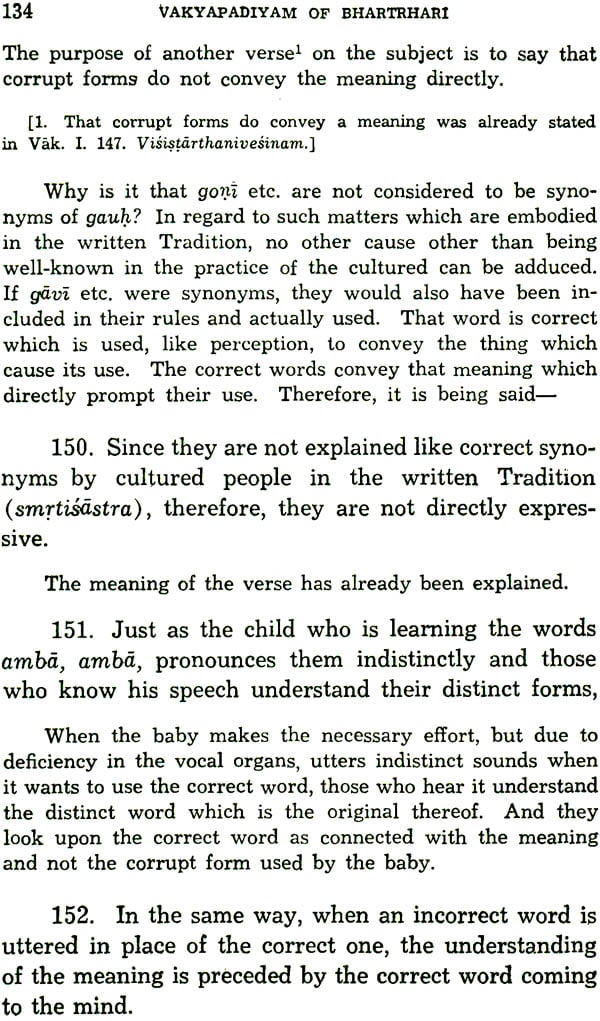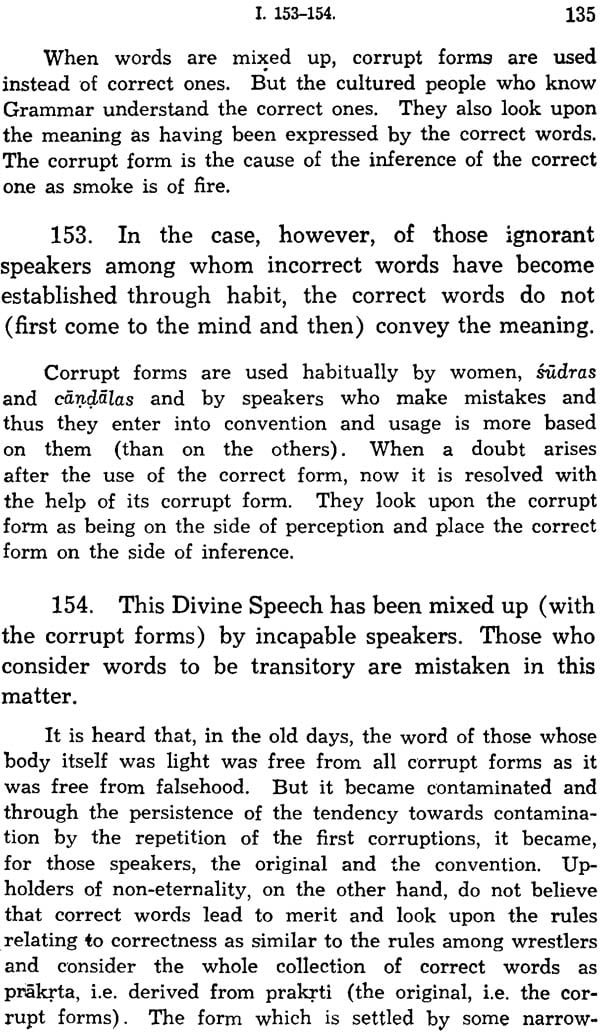
The Vakyapadiya of Bhartrhari With The Vrtti : Chapter I
Book Specification
| Item Code: | NAD174 |
| Author: | K.A.Subramania Iyer |
| Publisher: | Deccan College Postgraduate and Research Institute |
| Language: | English |
| Edition: | 1995 |
| Pages: | 177 |
| Cover: | Paperback |
| Other Details | 8.9 inch X 5.9 inch |
| Weight | 240 gm |
Book Description
On the 15th of October 1964 the Deccan College celebrates tI centenary of its main Building, and curiously enough this period coincides with the Silver Jubilee of the Postgraduate a Research Institute which, as successor to the Deccan Cole, started functioning from 17th August 1939 when members of the teaching faculty reported on duty. When I suggested to members of our faculty the novel idea that the centenary should be celebrated by the publication of a hundred monographs representing the research carried on under the auspis of the Deccan College in its several departments they readily accepted the suggestion. These contributions are from present and past faculty members and research scholars of the Deccan College, giving a cross-section of the manifold research that it has sponsored during the past twentyfive years. From small beginnings in 1939 the Deccan College has now grown into a well developed and developing Research Institute and become a national centre in so far as Linguistics, Archaeology and Ancient Indian History, and Anthropology and Sociology are concerned. Its international status is attested by the location of the Indian Institute of German Studies (jointly sponsored by Deccan College and the Goethe Institute of Munich), the American Institute of Indian Studies and a branch of the Ecole Francaise d’Extreme-Orient in the campus of the Deccan College. The century of monographs not only symbolises the centenary of the original building and the silver jubilee of the Research Institute, but also the new spirit of critical enquiry and the promise of more to come.
Introduction
It is not without some diffidence that I place before ‘nlrs this translation of Kaida I of the Vãkyapadiyam of artrhari and of the ancient commentary on it called Vriti. Niartrhari is a great name in the history of Sanskrit Vyãkarana. All the material which it would be most desirable to have to make a satisfactory study of this author is, however, not yet available. Only a fragment of his commentary e the Mahãbhiisya of Patañjali has so far been found and that in a single manuscript, now in the library of the University of Tubingen. That is only now being edited and published separately by the Benares Hindu University and by the Bhandarkar Oriental Research Institute. I understand that another edition is being prepared in West Germany, under the direction of Prof. P. Thieme. The only available manuscript of the Vtti on Kaaaa II of the Vãkyapadiyam is full of gaps. Both, Heltãrãja and Puaiyarãja are known to have commented on Kiãnçlas I and II. Helãrãja’s commentary, as he himself tells us1 in the opening verse No. 2 of his commentary on Kiäçla III, was based on the Vtti, most probably the ancient commentary which we now have in an incomplete form, it was called bdaprabM.2 unfortunately, it has so far not been found. While Punyarãja’s commentary on Kiçla II is available and has been published, that on Kaa I is not so. The commentary on Kcla I that was published in 1887 in Benares by Pandit Gangadhara Shastri MANAVALLI as that of Puiyarãja is not his at all, as the colophon at the end of the commentary (p. 62) clearly shows. It runs as follows — “Iti Srimad- mahavaiyakarana- Harivrsabhaviracitavakyapa-diyaprakase agamasamuccayo nama brahmakandam prathamam somaptam.”
The name Punyaraja is totally absent here. In view of this, the statement —
“Vakyapadiyam, punyarajakrtaprakasakhyatikasahitam prakasyate”
Found on p. 1 of this publication is a mere editorial error. This may be contrasted with the colophon at the end of the commentary on Kanda II which runs as follows —
“ Iti Sri Punyarajakrta Vakyapadiyadvitiyakandatika Samapta”.
Here Puiyaãja’s name is mentioned in an unambiguous manner. The real position is that we do not have Punyaraja’s commentary on Kanda I, though, from the way in which he begins his commentary on Kanda II, one can reasonably conclude that he must have written jt. This editorial error regarding the commentary on Kanda I was pointed out long ago by Dr. Kunhan RAJA4 and others, but it is still being repeated by scholars.5 According to Vnabhadeva, many commentaries on the Vakyapadiya existed before him, but he does not mention any author or work by name. Nor have I found any quotation from any previous commentary in his own commentary called Paddhati.6 The great Abhinavaguptãcãrya is known to have written a work called ‘Prakirnalavivaranam’, most probably a commentary on the IIIrd Kanda of the Vakyapadiyam, but that also has not yet been found. The basic portion of the Vakyapadiyam consists of kãrikas. They are extensively quoted, not only in grammatical literature, but also in the philosophical literature, brahmanical, Buddhist and jam, showing that the work was much studied once upon a time. While a few quotations have been found also from the ancient commentary which is here translated, it appears that the study of it was not much pursued in recent times. Hence the difficulty in getting manuscripts of it.
If, in the midst of this incompleteness of material, I have ventured to make this translation, it is only as a bumble contribution to the study of an author whose importance is now being realised and to the understanding of whose ideas others are also making contributions.
It is well known that ancient Sanskrit works written in the form of sütras or kãrikãs require a commentary for their understanding, written preferably by the author himself, or at least by one close to him and very familiar with the traditions under the influence of which be himself wrote. Mammata’s Kãvyapraka, Anandavaldhana’s Dhvanyaloka, Utpalacarya’s Pratyabhijnakarikas are examples of kãrikã works for which the author’s own Vrttis are available. It is, therefore, a matter of good fortune that, at least for the first kanda of the Vkyapadiyam, we have this ancient commentary called Vrtti in a complete form. Whether it is by the author himself will be discussed here later. It is correspondingly very regrettable that, for the second kanda, this commentary is available only with many gaps, some of which are long ones.
The Vrtti is not a word for word explanation of the kãrikãs. It is only rarely that the words of the kãrikãs are cited in the Vrtti for the purpose of explanation. Normally, the Vrtti consists of observations on the subject matter of the kãrikã. These observations clarify the main idea expressed by the verse. Sometimes, they ate quite elaborate as in the case of the Ka. 1.23 And 24-26. The Vrtti contains quotations from the A1if, the Varttikas of Katyayana, the Mahabhasya of Patanjali, the Sangraha, the Vedas, purkalpa, Itihãsa and many anonymous works. It gives the views of others, introduced by expressions like kecit, apare, etc. Previous authors are hardly ever mentioned by name but are referred to in a general manner, such as siksakara , Sütrakãra, Bhasyakara, Acãrya, etc.7 Even the author of the Sangraha is mentioned as Sangrahakara, and not by his name. With the exception of the Sangraha and the Bhasyavivarana (Vtti on 1.82) previous works are also referred to in a general way such as Agama, Vidydbhasya (1.128.) and so on.
| Foreword | vii |
| Introduction | ix |
| Bibliogarphy and Abbreviations | xxxix |
| Translation with Notes | 1-136 |
| Errata | 137 |
